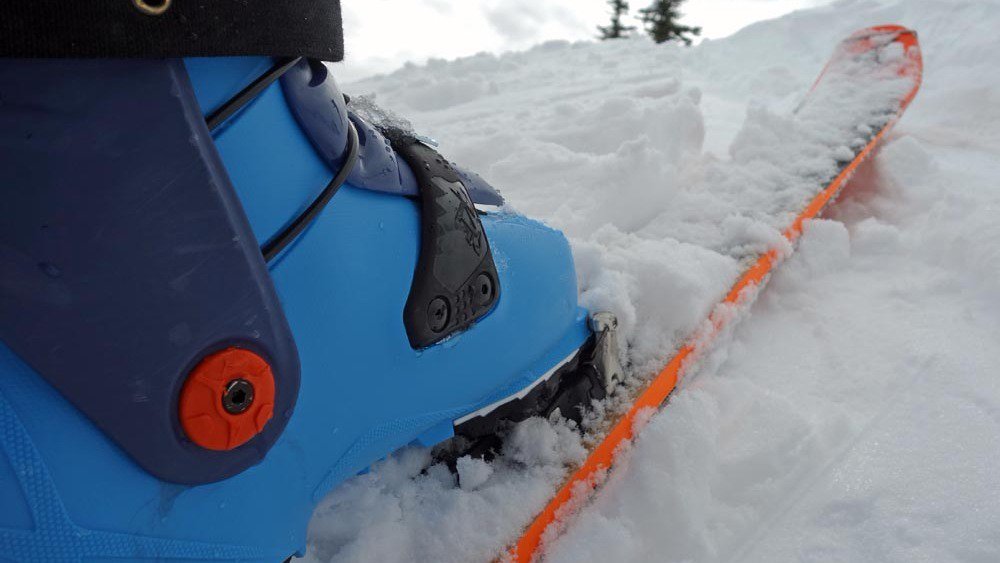Introduction
Tongued ski boots have a particular mystique and for good reason.
The Flexon concept lives on viaDalbellowhich was a Raichle sub-contractor.
Dalbello reintroduced the three piece design via their “Cabrio” line in 2004.

The outstanding feature of the Lupo AX120 is a thequalityof how it performs downhill.
However that is not to overlook the Dalbello Lupo’s uphill performance.
The womens version (LUPO AX 110 W is sized from 21 to 27).

I’ve had 20+ days on the Dalbello Lupo AX120 in size 27.5 (bsl 317mm).
Predominantly days are spent in either backcountry of Whistler, the Duffey and the B.C.
Interior with inbound resorts soft-skiing days.

My skiing is usually in high moisture-content snow.
Accordingly, my preference is for bigger skis and relatively stiff boots.
Weights of the sz 27 boot came in much higher at 1822g actual and 1545g (tongue removed).

An Intuition ProTour liner will yield approx 80g savings.
The Bootboard is 67g and it’s possible for you to get lighter for another approx 30g of savings.
Lying down on the job on Blackcomb.

Marketing bafflegab aside, the way the boot is constructed inherently allows for linear smooth flex.
The buckle lengths to outer sole don’t change when skiing.
This is the stiffest available P tongue stiffness
Walk mode engaged - burly and fool proof.

Buckle hardware is removeable
Walk Mode disengaged.
The mech is on a stiff spine to improve lateral rigidity
Interior pic of the walk/ski mode.
Patrollers, sledders and bootpackers rejoice.

The LUPO AX120 ships with Gripwalk soles.
DIN soles can be obtained from Dalbello dealers for approximately Can $100.
Closeup of front of the Lupo AX120 and the Gripwalk sole.

A tech fitting is molded into the boot.
The front two fasteners go into T-nuts.
Not only is it wider, it’s higher volume all around.

Heel and instep volume is on the moderate side.
It’s also worthwhile noting that Dalbello allows thermo-molding of both shell and liners viaMyfit technology.
The IRF AIR Liner is on the lower-to-moderate side of volume so it may pinch for showroom testing.

I benefited from a liner cook to the extent that no shell thermomolding was necessary.
Anecdotal experiences from the friendly boot-fitters at Comor is that the Dalbello plastic holds a punch very well.
The MOST IMPORTANT THING FOR ANY BOOT IS FIT.

Work with a good bootfitter at a good shop to get a good fit.
Flat removeable boot board to help with fitting.
But yet can be expanded a ton for those with high volume high arches.

Note the canting mechanism
Dalbello stock Irf Air liner made by Palau.
Bottom is Ultralon foam.
Go one step further by removing the tongue and you’re off to the races with a free-striding boot.

Downhill
The Lupo AX120 is a joy to ski.
One of the most frequently asked questions about touring boots is their stiffness.
The other is the smoothness of flex (ie ski quality).

Put plainly every other touring boot I’ve skied feels like sub-par compared to how the Lupo AX120 skis.
The boot has a huge sweet spot and put simply is balanced.
It’s somewhat like sophisticated suspension for your skiboots.

This fantastic creation of Dalbello is pure bliss on the downhill.
Inherent to the three-piece design is the ability to tune the boot’s stiffness by substituting different tongues.
Bear with me as Dalbello’s naming conventions keep changing and are bewildering.

The Dalbello website currently shows three different kind of flex-stiffness of tongues (stiff, medium and soft).
In the 2016-7 model year there were just P and M tongues.
Confusingly there were also legacy “B” tongues shipping with Dalbello boots as OE/factory-only tongues.

Polyamide external tongue (tongue plastic depends on boot).
This is a P tongue which is stiffest.
B,C and D tongues are the “old” naming convention.

Now there is just the P and M tongues.
Comparison pictures
Dalbello Lupo AX 120 - Dynafit Vulcan



